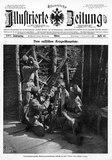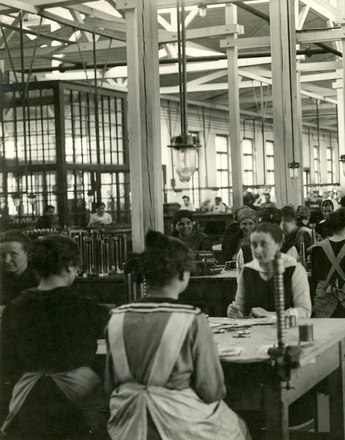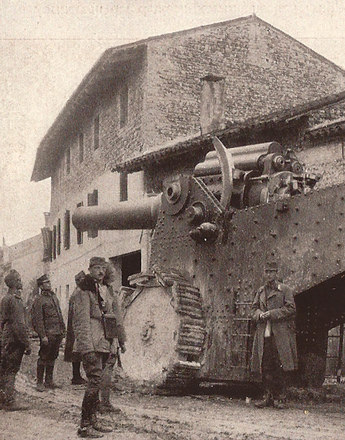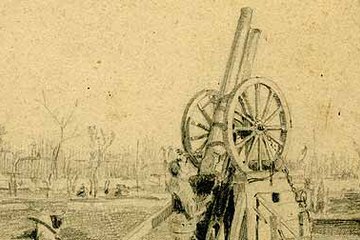The high rate of fire of the machine gun: concerning the Mitrailleuse, the Gatling Gun, the Maxim Gun and the Schwarzlose MG
Among all the different branches of weapons of World War One, the machine gun held a prominent position. Thousands and thousands of soldiers were killed in the blaze of gunfire. Yet the full military potential of these automated guns was only to become apparent in the course of the war.
The mitrailleuses that had been developed in Belgium and France since the 1850s on the principles of fusillade guns, and the Gatling guns that had been developed in the USA in the 1860s were considered to be the first rapid-fire weapons. The advantage the Gatling gun had over the mitrailleuse was that it did not have to be reloaded manually after each volley, being a repeating rifle. Both types of weapons already showed a high rate of fire, yet one would not call them automatic weapons in the true sense of the word as they were still manually operated with a crank handle.
The first automatic, since self-loading, gun was constructed in 1884 in England by the American Hiram Maxim (1840-1916). Unlike its predecessors the Maxim gun did not have to be manually operated as it made use of the recoil energy that was set free when the gun was fired for the reloading process. This weapon was not only superior to its predecessors due to its high rate of fire of about 500 shots per minute, but also when it came to weight and reliability. In the years to follow the Maxim gun was reworked and improved several times as well as adapted for diverse purposes. It was exported to many different countries or produced under licence.
From 1887/88 the Imperial Army was also rearmed by acquisition of some Maxim guns. Around the same time Archduke Karl Salvator (1839-1892) and Georg Ritter von Dormus (1853-1940) developed the fusillade gun mitrailleuse M.93. However, as the M.93, which was produced at the Skoda factory plant, turned out to be only of limited use in battle, it failed to meet with any success.
Due to the fact that the Austro-Hungarian military commanders still underestimated the importance of these new types of weapons and also because the Imperial arms industries still focued mainly on producing accurate repeating rifles, they paid little heed to acquiring or improving machine guns. This changed in 1907 when the 'Oesterreichische Waffenfabriksgesellschaft' (OeWG) in Steyr acquired the licence from the Berlin engineer Andreas Wilhelm Schwarzlose (1867-1936) for the production of his machine gun. From 1908 onwards the MG-system 'Schwarzlose' was introduced to the Imperial Army.
This type of weapon was to prove extremely successful in World War One. It was considered a killing machine par excellence next to the artillery guns while at the same time it was more cost-efficient compared to the expensive artillery ammunition. This is described, for example, by the Austro-Hungarian officer Jaromir Holy in his diary when he met with Russian machine gun positions near Sambor (today's Ukraine, Самбір): "Briskly the military companies are swarming out, but already a whistle is starting up and ratatata ….tatatata....tatata....one can hear the Russian machine guns blaring from over there. The clay soil kicks up dust as if lashed by rain drops. Yet still, imperturbably, it advances step by step. But – what do I see – there on the left, some troops seem to be falling down and even my loud cheers don't help them to get up again. I send someone over and receive the message: 'All dead' – man by man has been mown down by the Russian machine guns …"
The full potential of this relatively new weapon was only discovered in the course of the war. This was shown in the case of Austria-Hungary by means of the massive military build-up: at the beginning of the war the Imperial Army was equipped with only 2,700 machine guns of various types, whilst by the end of the war the armoury had been extended to over 40,500 of the type 'Schwarzlose'. The further developments that were carried out during the war also prove the importance of this weapon. For whilst the classic machine guns were mostly used as defensive weapons due to their average weight of 20 kg (44 pounds) there were more automatic offensive weapons added in the war: the 'light machine guns' of about 10 kg (22 pounds), as well as submachine guns with an average weight of 5 kg (11 pounds). These types of guns could now be carried and operated by one man alone and thus were well suited for offensive combat.
Baer, H. Fritz: Die Erzeugung der Handfeuerwaffen in Österreich im 19. Jahrhundert am Beispiel der Firma Werndl in Steyr, in: Foerster, Roland G./Walle Heinrich (Hrsg.): Militär und Technik. Wechselbeziehungen zu Staat, Gesellschaft und Industrie im 19. und 20. Jahrhundert, Herford 1992, 123-160
Ortner, M. Christian: Die k. u. k. Armee und ihr letzter Krieg, Wien 2013
Pfundner, Martin: Austro-Daimler und Steyr. Rivalen bis zur Fusion. Die frühen Jahre des Ferdinand Porsche, Wien/Köln/Weimar 2007
Quotes:
"Briskly the military companies...": Holy, Jaromir: Von Czernowitz bis Iwangorod. Kriegstagebuch eines österreichischen Frontoffiziers, Wien/Leipzig 1916, o.S. (Translation)
-
Chapters
- Explosive Discoveries. From Gunpowder to TNT
- From the Lorenz Gun of Königgrätz to the Ordnance Weapon M1895
- Artillery I.: Technical Innovation and late Modernisation
- Artillery II: The Creeping Barrage, Barrage and Curtain Fire
- The high rate of fire of the machine gun: concerning the Mitrailleuse, the Gatling Gun, the Maxim Gun and the Schwarzlose MG
- An Effective Addition: Hand Grenades and Mortars
- The Imperial Arms Industry







